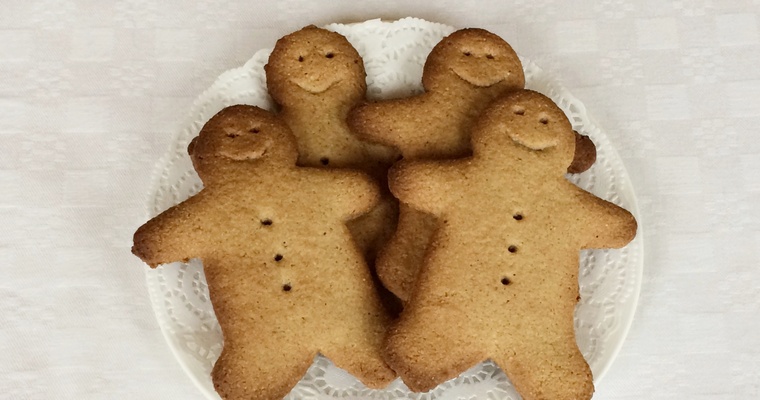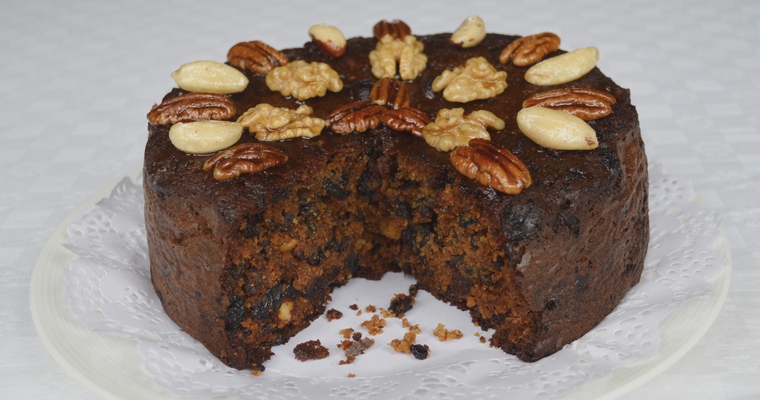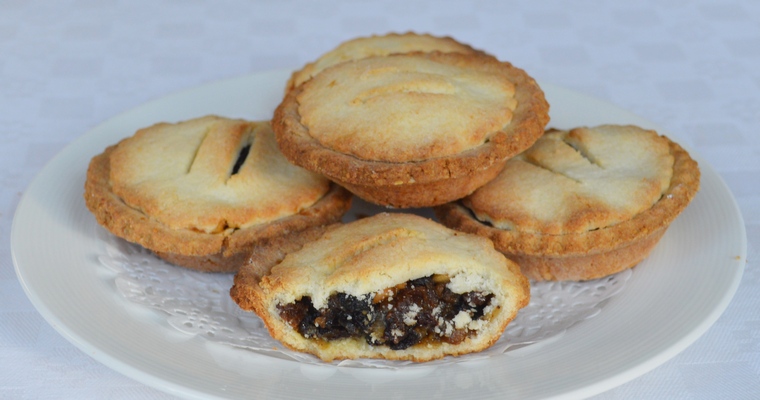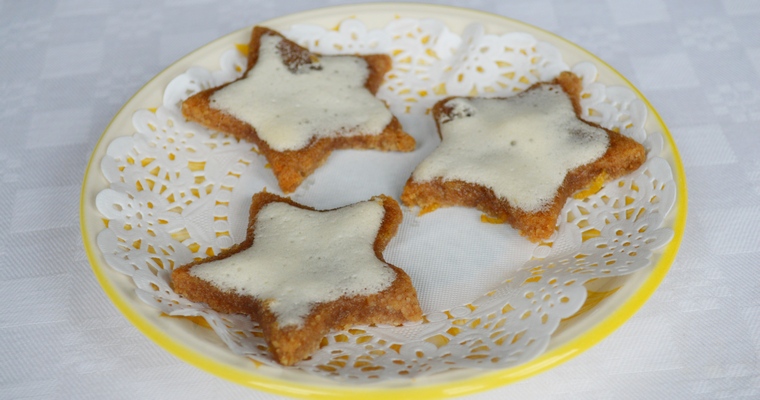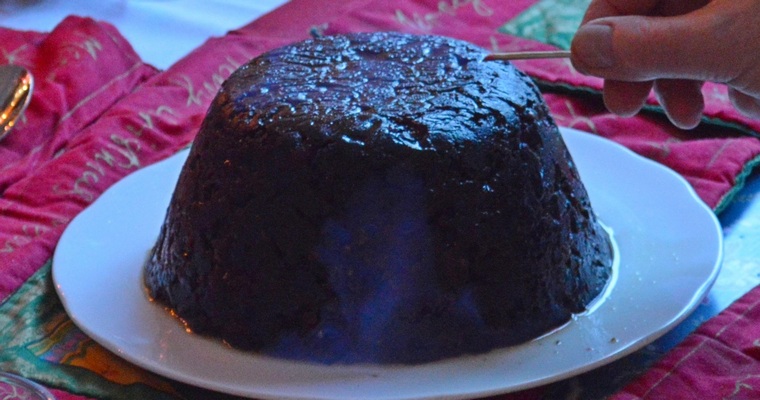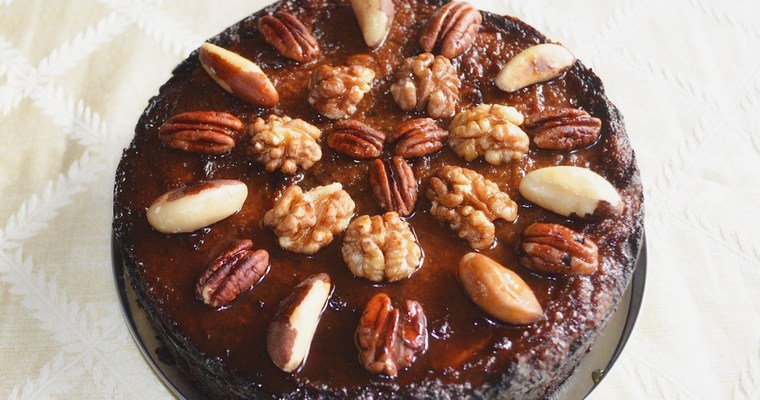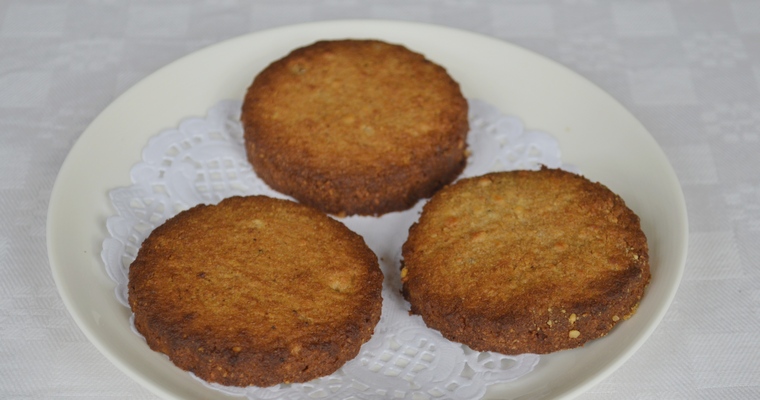Step into Christmas with these ginger, clove, nutmeg and cinnamon biscuits. A Gluten-free, Paleo and Vegan recipe made with ground almonds and maple syrup.
| Skip straight to the recipe |
01. What is gingerbread?
Gingerbread is a sweet biscuit that is flavoured with aromatic spices like ginger, cinnamon, nutmeg and cloves, and moulded into decorative shapes. The texture can vary considerably: from hard and dry biscuits that snap with a crunch, to soft and chewy cookies that bend. Although we associate gingerbread with Christmas, this is a relatively recent association, as gingerbread was eaten all year round in medieval times. In part, this shift has been driven by marketing, starting with the Brothers Grimm in nineteenth-century Germany. But it is also a reflection of the modern palate, which relegates warming spices like ginger and cloves to medicinal winter drinks. In contrast, medieval English cuisine was a riot of expensive spices. Meat dishes were cooked with a heavy-handed seasoning of sweet spices, which were balanced by a sour vinegar called verjuice (the original sweet and sour). The flavour combinations would seem quite unfamiliar to our palates, but parallel those found today in Moroccan food.
02. Why is brown sugar used to make gingerbread?
Originally, gingerbread was sweetened with honey. Sugar was an expensive extravagance until the 18th century, nicknamed ‘white gold’. But when access to sugarcane plantations in the Caribbean made granulated white sugar widely available, gingerbread resisted the switch. Instead, gingerbread recipes were adapted to use soft brown sugar – a type of sugar that retains a small percentage of the thick, dark molasses that are leftover when the sucrose is extracted from sugarcane. Molasses add colour, flavour and moistness (for more information on the different types of sugar, read my post How to replace sugar with honey in baking recipes). Brown sugar may be used exclusively, or it may be used in combination with a small quantity of golden syrup or treacle (1-4 tablespoons): golden syrup is too sweet to be used in larger quantities than this, while treacle is too bitter. For those avoiding refined sugar, maple syrup makes an excellent substitute, being dark and strongly flavoured. This mimics the effects of brown sugar and golden syrup, creating a bendy and chewy type of biscuit.
03. Can you make convincing gluten-free gingerbread?
Gluten is a sticky protein that is integral to creating a strong, elastic framework to trap air during cooking. It is also mild-tasting, and capable of absorbing its own weight in water. These properties are important if you want to bake a delicate sponge cake. But gingerbread isn’t meant to rise, so it doesn’t need gluten to create a network of air bubbles. It is full of strongly-flavoured spices, so it doesn’t matter if the gluten-free flour has a distinctive flavour. And molasses retain moisture, so gluten is not needed for hydration. This means that gingerbread is well suited to gluten removal.
04. What gluten-free flour can I use to make gingerbread?
Staying true to gingerbread’s medieval origins, I so wanted to devise a recipe that exclusively used ground almonds for flour. But ground almonds are too coarsely ground to work in isolation. The larger particles reduce the surface area available for the absorption of liquid, making the dough too sticky to roll out. But if the dough is too firm, then the baked result will be tough and dry. This is the balancing act that must be carefully negotiated when making gingerbread. For this reason, gingerbread recipes do not normally include an egg. This is unusual for a biscuit / cookie recipe, but the extra liquid makes the dough too wet and sticky to roll out.
After some experimentation, I ended up supplementing my ground almonds base with tapioca flour and almond flour, in order to wick up the excess moisture. Tapioca flour is excellent at firming up dough, but can have a toughening effect if it exceeds more than 25% of the flour mix. This ‘tasteless’ starch also seems to deaden flavour. Almond flour mitigates this, but is expensive to use in large quantities. If you don’t have almond flour (I know it can be difficult to find in the UK, which is why I have a recipe for making your own almond flour), you can replace the almond flour with the 75g of tapioca flour. This will make the gingerbread drier – closer to a gingernut, that breaks with a snap.
05. Why is gingerbread dough usually chilled in the fridge before rolling out?
Butter is usually used for fat in gingerbread recipes. It comprises just 15% of the weighed ingredients, since gingerbread is a high flour and high sugar recipe. The standard methodology involves melting butter and sugar in a saucepan, and then stirring in the dry ingredients to form a dough. With this method, the dough needs to be chilled in the fridge for at least half an hour before rolling out. This gives the fat time to resolidify, which makes the dough more pliable to handle.
Butter is the preferred fat for baking because it adds a lovely butter flavour. But this is completely lost among the heavy spices and molasses of gingerbread. Butter also presents a practical problem, because it has a low melting point. Butter melts at 32°C/90°F, while the normal body temperature is 37°C/99°F. This means that butter-enriched dough becomes progressively harder to roll out with continued manual handling. And when the biscuits go in the oven, the butter melts and spreads before the shapes have time to set. This results in biscuits that are thinner and crisper. Biscuits made with liquid fats like olive oil hold their original shape and do not spread in the oven. This is because the fat was already a liquid when the raw dough was formed. As my recipe uses a liquid fat, the dough does not need to be refrigerated, and the shapes will not spread and thin in the oven.
Tips & Tricks
- Roll out on a sheet of baking paper – this stops the dough from sticking to the cutting surface, making it easier to transfer to the baking tray
- Use a flat baking tray – deep-sided trays will trap steam and stop the biscuits from crisping up.
Ingredients
- 200g ground almonds
- 75g extra fine almond flour (this is not the same as ground almonds, being de-oiled, de-skinned and more finely ground: buy here or make your own)
- 50g tapioca flour
- 1 1/2 teaspoons ground ginger
- 1 teaspoon ground cinnamon
- 1/2 teaspoon ground nutmeg
- 1/4 teaspoon ground cloves
- 1/2 teaspoon salt
- 120ml (160g) maple syrup
- 90ml (80g) olive oil
Instructions
- Preheat the oven to 170°C/340°F. Line a flat metal baking tray with baking paper.
- Combine the dry ingredients in a large mixing bowl (ground almonds, almond flour, ginger, cinnamon, nutmeg, cloves and salt). Stir with a metal spoon until evenly mixed.
- Add the maple syrup and olive oil. Stir until fully blended. Using your hands, press together to form a slightly sticky dough. If the dough feels very sticky, add 1 1/2 teaspoons of almond flour mixed with 1 teaspoon of tapioca flour at a time, until you get the right consistency. This will make the gingerbread less tender and more crispy, so avoid unless absolutely necessary. Knead into a ball.
- Lay a sheet of baking paper on a chopping board. Place the dough on top of the baking paper, and sandwich another sheet of baking paper on top. Use a rolling pin to roll out to a thickness of about 5mm. Peel off the top sheet and press your cutter firmly through the dough. If cutting out large or intricate shapes (like men), it can be tricky to prise them off the baking paper without warping the outline. To avoid this, leave the cutter in place and collect up all the trimmings into a ball (you will be cutting out the men one at a time). Lift off the cutter and set aside.
- Gently slide one hand underneath the baking paper, until you are cradling the cut-out man in the flat of your hand. Lift up the whole lot and hover your hand over the lined baking tray. Quickly flip upside down and splat the man onto the tray. Peel off the top sheet of baking paper. Repeat until all the dough is used – the mixture should make 8. If you like, use a skewer to poke holes for eyes and buttons, and a teaspoon to draw in a mouth.
- Arrange on the baking tray, leaving some space between each man to help with browning. Transfer to the lowest shelf of the preheated oven. Bake for 12-15 minutes, until the edges are only just starting to brown and crisp (for a softer, chewier texture, remove from the oven closer to 12 minutes). The centre will still be squishy to the touch, but will firm as it cools. Turn the tray halfway through for even colouring.
- Transfer onto a wire cooling rack using a fish slice. Once cooled, transfer to an airtight container and store at room temperature, where they will keep for 1 week.

